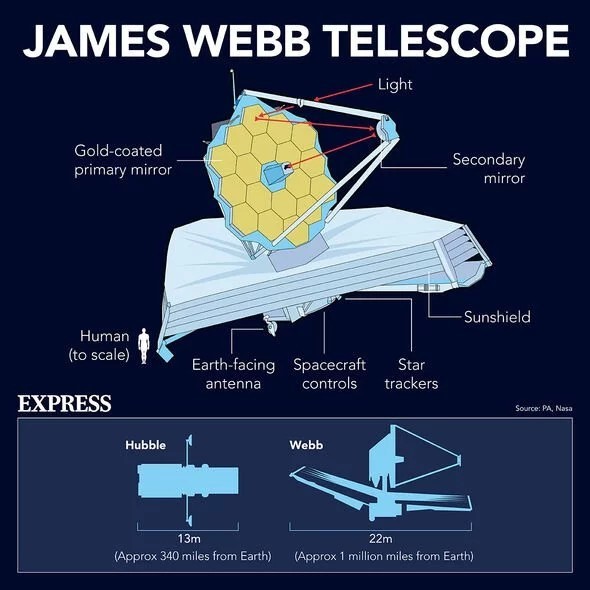James Webb Telescope Detects Possible Life Signals
Why in the News ?
Scientists using the James Webb Space Telescope have detected potential biosignatures, gases linked to biological life, in the atmosphere of exoplanet K2-18 b — marking the strongest hint yet of possible life beyond Earth.
About Discovery of Potential Biosignatures:
- Scientists observed the exoplanet K2-18 b using the James Webb Space Telescope.
- Two gases — dimethyl sulfide (DMS) and dimethyl disulfide (DMDS) — were detected in its atmosphere.
- On Earth, both gases are typically produced by marine microbial life, especially phytoplankton.
- Researchers believe this raises the possibility of microbial life existing on K2-18 b.
Cautious Optimism from Scientists
- Scientists stress these gases are only a “possible biosignature,” not concrete proof of life.
- Further observations are required before confirming any biological presence.
- Lead researcher Nikku Madhusudhan described the findings as a transformative moment for the search for life beyond Earth.
- The discovery shows current space telescopes can detect signs of life on distant planets.
Planet K2-18 b and Its Unique Features :
- K2-18 b is located in the habitable zone of its star, 8.6 times Earth’s mass and 2.6 times its diameter.
- Earlier observations also found methane and carbon dioxide, suggesting it may be a “hycean world” — a water-rich planet possibly harboring life.
- Scientists believe if life exists there, it’s likely microbial and ocean-based, similar to Earth’s simplest organisms.
About K2-18b Exoplanet:● Discovered in 2015 during NASA’s K2 mission. ● Located over 120 light-years away from Earth. ● 8.6 times more massive than Earth. ● Likely a “Hycean” world — with a hydrogen-rich atmosphere and ocean-covered surface. ● Recent Webb Telescope observations detected methane and carbon dioxide in its atmosphere. About James Webb Space Telescope: ● Joint project by NASA, ESA, and the Canadian Space Agency. ● Launched in December 2021. ● Positioned at Sun-Earth L2 Lagrange Point, 1.5 million km from Earth. ● Largest and most powerful infrared space telescope. ● Studies cosmic history: from Big Bang to planetary formation. What is an Exoplanet? ● An exoplanet is a planet located outside our solar system. ● Most exoplanets orbit stars beyond the Sun. ● Some, known as rogue planets, drift freely without orbiting a star. ● Scientists study exoplanets to understand planet formation and the potential for life. ● Thousands have been discovered, expanding knowledge of the universe. |
—————————————-




